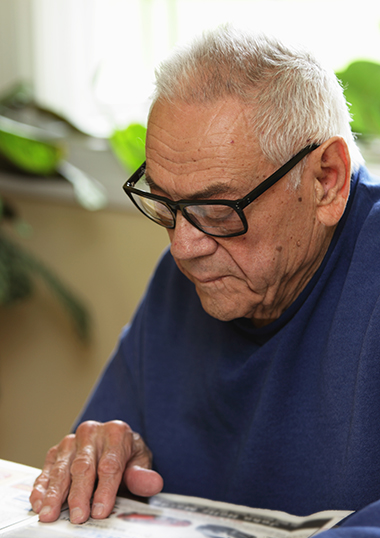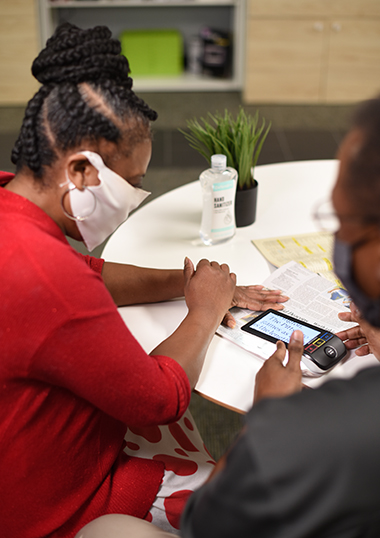
Living a full life with macular degeneration
Macular degeneration affects more than 10 million Americans—more than cataracts and glaucoma combined. It typically affects people 55 and older and becomes more common as you age.
While there is no cure for macular degeneration right now, there are things you can do to slow its progression and continue living a full and independent life.

Wide-ranging resources for daily life
If you’re having trouble reading, recognizing faces or colors or seeing objects in fine detail, there are a world of products that can help.
Hand-held magnifiers, closed circuit TV magnifiers, large-print materials, special lighting and more are all designed specifically for low vision, and they’ll help you return to the activities and independence you’re used to.

Are you or someone you love living with macular degeneration?
Set up your appointment
The first step is easy. After you’ve talked to your eye doctor or care provider, call one of the Community Low Vision Centers. We’ll ask a few questions to better understand your situation, and then we’ll set you up with an appointment.
Discuss your goals
When we meet, we’ll continue the conversation to learn more about your current lifestyle, the changes you’re experiencing and what you’re looking for. You’ll be able to try out adaptive devices as we work together to make a plan for adjusting and getting back to life as usual.

Ask questions
You might have questions about your device or about macular degeneration in general after you get home. We can help with that, too. Our associates are ready to provide answers and support and connect you to others experiencing this form of low vision.
Connect with local help today!
